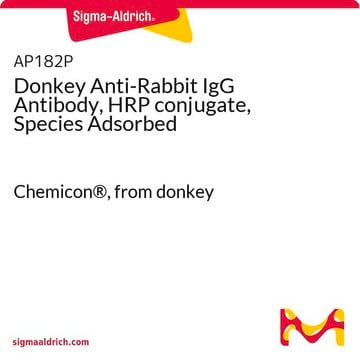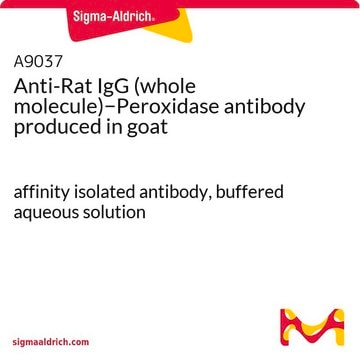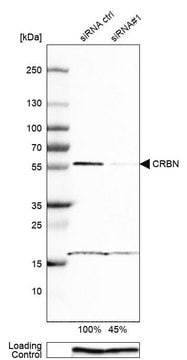SAB4200085
Monoclonal Anti-AGO2 antibody produced in rat
~1.5 mg/mL, clone 11A9, purified immunoglobulin
Synonym(s):
AGO2 Antibody - Monoclonal Anti-AGO2 antibody produced in rat, Ago2 Antibody, Anti-Argonaute 2, Anti-EIF2C2 eukaryotic translation initiation factor 2C, 2, Anti-Q10
About This Item
Recommended Products
biological source
rat
conjugate
unconjugated
antibody form
purified immunoglobulin
antibody product type
primary antibodies
clone
11A9, monoclonal
form
buffered aqueous solution
mol wt
antigen ~85 kDa
species reactivity
monkey, rat, human, mouse, bovine
packaging
antibody small pack of 25 μL
concentration
~1.5 mg/mL
technique(s)
immunocytochemistry: suitable
immunoprecipitation (IP): suitable
western blot: 0.5-1.0 μg/mL using HeLa cell extracts
isotype
IgG2a
UniProt accession no.
shipped in
dry ice
storage temp.
−20°C
target post-translational modification
unmodified
Gene Information
human ... AGO2(27161)
rat ... Ago2(59117)
General description
Application
- immunofluorescent localization
- western blot analysis
- immunoprecipitation.
Biochem/physiol Actions
Physical form
Storage and Stability
Other Notes
Disclaimer
Not finding the right product?
Try our Product Selector Tool.
recommended
Storage Class Code
10 - Combustible liquids
Flash Point(F)
Not applicable
Flash Point(C)
Not applicable
Certificates of Analysis (COA)
Search for Certificates of Analysis (COA) by entering the products Lot/Batch Number. Lot and Batch Numbers can be found on a product’s label following the words ‘Lot’ or ‘Batch’.
Already Own This Product?
Find documentation for the products that you have recently purchased in the Document Library.
Customers Also Viewed
Articles
Sigma’s Imprint RNA Immunoprecipitation Kit was used to copurify human argonaute 2 (Ago2)-associated RNAs from HeLa cells. MicroRNAs reverse transcribed and quantitating using Mysticq reagents.
Our team of scientists has experience in all areas of research including Life Science, Material Science, Chemical Synthesis, Chromatography, Analytical and many others.
Contact Technical Service









